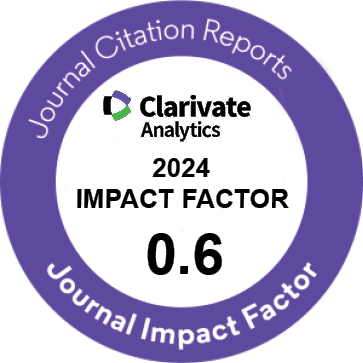| Original Article | |
| Relationship Between Peak Systolic Velocity in Pulmonary Artery Color Doppler and Neonatal Respiratory Outcomes in Fetal Growth Restriction With Abnormal Fetoplacental Circulation: A Prospective Cohort Study | |
| Rozita Hosseinzadeh1, Zahra Fardiazar1, Leila Vahedi2, Shervin Tabrizyan1, Saddollah Yeghaneh Dost3, Shamci Abbas Alizadeh1 | |
| 1Women’s Reproductive Health Research Center, Tabriz University of Medical Sciences, Tabriz, Iran 2Road Traffic Injury Research Center, Tabriz University of Medical Sciences, Tabriz, Iran 3Pediatric Health Research Center, Tabriz University of Medical Sciences, Tabriz, Iran |
|
|
IJWHR 2022; 10: 166-171 DOI: 10.15296/ijwhr.2022.29 Viewed : 36446 times Downloaded : 3295 times. Keywords : Fetal growth restriction, Placental insufficiency, Pulmonary artery, Respiration, Ultrasonography, Doppler, Color |
|
| Full Text(PDF) | Related Articles | |
| Abstract | |
Objectives: Newborns with fetal growth restriction (FGR) are at a high risk of prenatal mortality and morbidity compared to infants with appropriate intrauterine growth. The importance of Doppler ultrasound as a non-invasive method for estimating the pulmonary artery pressure (PAP) in newborns and adults has been mentioned in many studies. This study investigated the relationship between peak systolic velocity in pulmonary artery color Doppler and neonatal respiratory outcomes in FGR with abnormal fetoplacental circulation. Materials and Methods: In this prospective cohort study, 60 pregnant women with a gestational age of 32-37 weeks were studied in two groups: group I (women with fetus suspected of FGR according to ultrasound assessment) and group II (women with normal pregnancy). All women underwent Doppler ultrasound of pulmonary artery, umbilical artery, middle cerebral artery, and venous ductus. The pick systolic velocity (PSV) of the trunk of the pulmonary artery was evaluated in the fetus of all participants. After delivery, all infants were studied for respiratory outcomes at birth. Finally, variables included gestational age, fetal estimated weight based on Hadlock table, fetal amniotic fluid index, maternal parity, umbilical artery pulsatility index (PI), middle cerebral artery PI, maximum pulmonary artery velocity (PV), umbilical artery to middle cerebral artery index ratio, and the number of infants admitted to the newborn intensive care unit (NICU) due to respiratory distress were compared between two groups. Results: Our results showed a significant association between pulmonary artery PI in FGR fetuses with abnormal fetoplacental circulation. The rate of early NICU hospitalization of infants in the group I was higher than group II due to respiratory diseases, as well as the need for oxygen and continuous positive airway pressure (CPAP). Conclusions: Pulmonary artery color Doppler ultrasound can be effective in diagnosing FGR embryos during pregnancy and making the necessary predictions to reduce prenatal mortality and morbidity in these infants. |
Cite By, Google Scholar
Google Scholar
PubMed
Online Submission System
 IJWHR ENDNOTE ® Style
IJWHR ENDNOTE ® Style
 Tutorials
Tutorials
 Publication Charge
Women's Reproductive Health Research Center
About Journal
Publication Charge
Women's Reproductive Health Research Center
About Journal
Aras Part Medical International Press Editor-in-Chief
Arash Khaki
Mertihan Kurdoglu Deputy Editor
Zafer Akan























